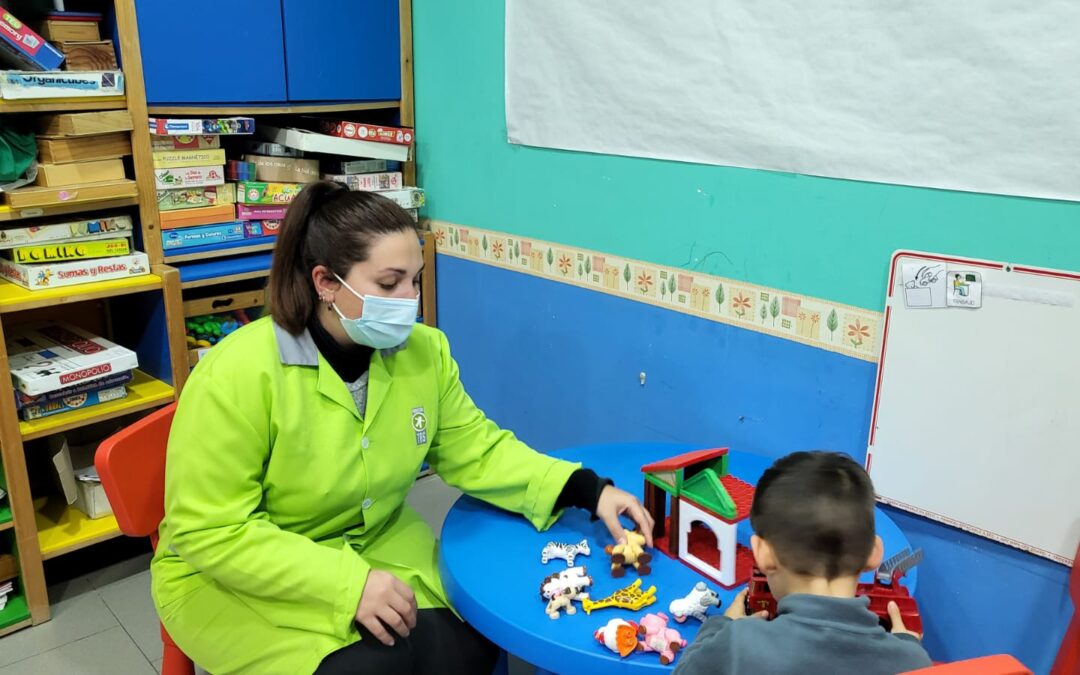Nearly 90% of children treated with early intervention have a primarly development disorder
The studies and diagnoses, far from limiting the children’s abilities, are a point of certainty on which to base our efforts and through which to expand the capacities that optimise development in the family’s environment and in the community in general.
María del Carmen García, psychologist and educator specialised in supporting children and young people with functional diversity, as part of the Foundation’s team, has based her TFM (thesis degree) on a descriptive study of 238 children aged between zero and six (born between 2014 and 2020), service users in the day-care centres in Cantillana, Lora del Río and Gerena—rural municipalities in the Seville area.
By means of a non-probabilistic convenience sampling, the subjects were chosen by accessibility, resulting in those who made up the totality of service users who had an open file in our early intervention’s centres between September and October 2020.
Based on the hypotheses expected, the study shows the difference between genders, providing a larger number of assisted boys, thus exceeding the number of girls by a large percentage, issue that contrasts with the 2017 study made by the State Disability Observatory, which states that in rural areas the number of women with disabilities is higher than that of men. This fact may suggest that women with disabilities are not being detected and, therefore, are not receiving specialised early care.
On the other hand, the effectiveness of the human factor stands out, providing an effective assessment of 80% of the minors referred to the service, as well as their subsequent implementation of an individualised plan; 20% are still waiting for intervention.
Regarding care work, almost 90% of the children attended in early intervention mainly present a developmental disorder, with more than half of them having associated comorbidity (studies consider further research into comorbidities in children from the age of six). Studying and attending to the different pathologies which are associated with the main one is crucial, as these actions allow aspects of intervention to be defined with the aim of developing more effective secondary prevention measures and early detection, or even anticipation.
Finally, it is worth highlighting the study on diagnoses, which shows the average of those most common disorders in our early intervention centres: Developmental Language Disorder (31.93%), followed by Developmental Delay (28.99%) and Autism Spectrum Disorder (11.35%).
As a result of the research work of professionals in the social economy sectors, we improve the knowledge of our environment and our responses can reach and solve our needs. An adequate treatment that promotes learning and the complete integration of children with functional diversity in our environment is possible. We are working to achieve it.

